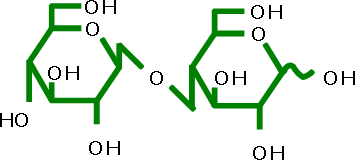
|
Top > Products > NPC Cello-Oligo® & Sun Cellobio® |
|||||||||||||||||||||||
| Weaning pigs | Increased weight, fewer diarrhea days, improved feed efficiency |
|---|---|
| Calves | Increased weight, improved fiber digestion, fewer diarrhea days, improved feed efficiency |
| Chickens | Increased weight |
| Recommended quantities | |
|---|---|
| Chickens, pigs | 0.3 – 0.6% of feed |
| Calves | 3 – 5g per day per head, dissolved in milk substitute, raw milk or water given to the calves |
Note: please inquire for detailed information.
Labeling
Labeling when used as an ingredient: Enzymatic hydrolyzate of cellulose
For use in food
Sun Cellobio®
Sun Cellobio® is a product intended for use in food; compared to NPC Cello-Oligo® it has improved cellobiose purity and greater transparency when dissolved. It can be used in a wide variety of foodstuffs and functional foods.
Functional research data*
- 1. Regulating the function of the intestines
- ·Relief of chronic ulcerative colitis (animal model)
·Relief of constipation - 2. Improved lipid metabolism (fattening pigs)
* For detailed information contact NPC.
Labeling
Labeling when used as an ingredient: Cello-oligosaccharides
Margin of Safety
Acute toxicity testing
| Route of administration | Animal | Gender | Results |
|---|---|---|---|
| Oral | Sprague-Dawley (SD) rats |
Male and female | LD50: more than 6g/kg (no death) |
Mutagenicity testing
| Reverse mutation effects | Negative |
|---|
Other information
1. Sun Cellobio® has passed safety tests required for the ingredients of cosmetics (primary skin irritation test, sensitizing test, eye irritation test, human patch test).
2. Sun Cellobio® is an oligosaccharide that is difficult to digest. If a large quantity is ingested at once, it may cause loose bowels temporarily. The maximum amount that can be ingested without causing diarrhea is 0.360g per kilogram of body weight.
Note: These cello-oligosaccharide products were developed jointly with Kyoto University's Research Institute for Sustainable Humanosphere, Matsutani Chemical Industry Co., Ltd., and Japan Chemical Engineering & Machinery Co., Ltd.
For inquires & information about these products:
Nippon Paper Industries Co.,Ltd.
Chemical Division
4-6, Kandasurugadai, Chiyoda-ku, Tokyo 101-0062, Japan
Phone: +81-3-6665-5900 Facsimile: +81-3-6665-0360
Inquire here
